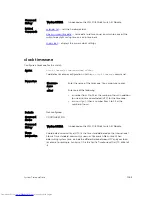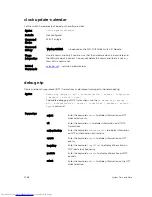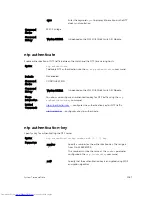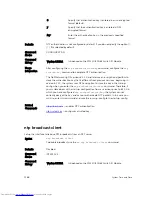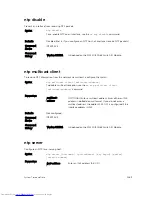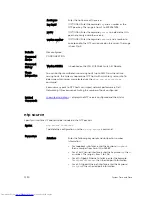
delete to succeed. If the address and mask are not specified, this command deletes
all allow-remote entries.
Parameters
ip-address
Enter the source IPv4 address in A.B.C.D format.
ipv6–address
Enter the source IPv6 address in X:X:X:X::X format.
mask
(OPTIONAL) Enter a network mask in /prefix format (/x) or
A.B.C.D to match a range of remote addresses. The default
mask is /32 for IPv4 addresses and /128 for IPv6 addresses,
which match only the specified address.
Defaults
If no tunnel allow remote is configured, all traffic which is destined to tunnel
source address will be decapsulated.
Command
Modes
INTERFACE TUNNEL
Command
History
Version 9.4(0.0)
Introduced on the MXL.
Usage
Information
Up to eight allow-remote entries can be configured on any particular multipoint
receive-only tunnel.
This command will fail if the address family entered does not match the outer
header address family of the tunnel mode, tunnel source, or any other tunnel
allow-remote.
If any allow-remote are configured, the tunnel source or tunnel mode commands
will fail if the outer header address family does not match that of the configured
allow-remote.
tunnel dscp
Configure the method to set the DSCP in the outer tunnel header.
Syntax
tunnel dscp {mapped |
<value>
}
To use the default tunnel mapping behavior, use the
no tunnel dscp
value
command.
Parameters
mapped
Enter the keyword
mapped
to map the original packet DSCP
(IPv4)/Traffic Class (IPv6) to the tunnel header DSCP (IPv4)/
Traffic Class (IPv6) depending on the mode of tunnel.
value
Enter a value to set the DSCP value in the tunnel header. The
range is from 0 to 63. The default value of
0
denotes
mapping of original packet DSCP (IPv4)/Traffic Class (IPv6) to
the tunnel header DSCP (IPv4)/Traffic Class (IPv6) depending
on the mode of tunnel.
Tunneling
1299

